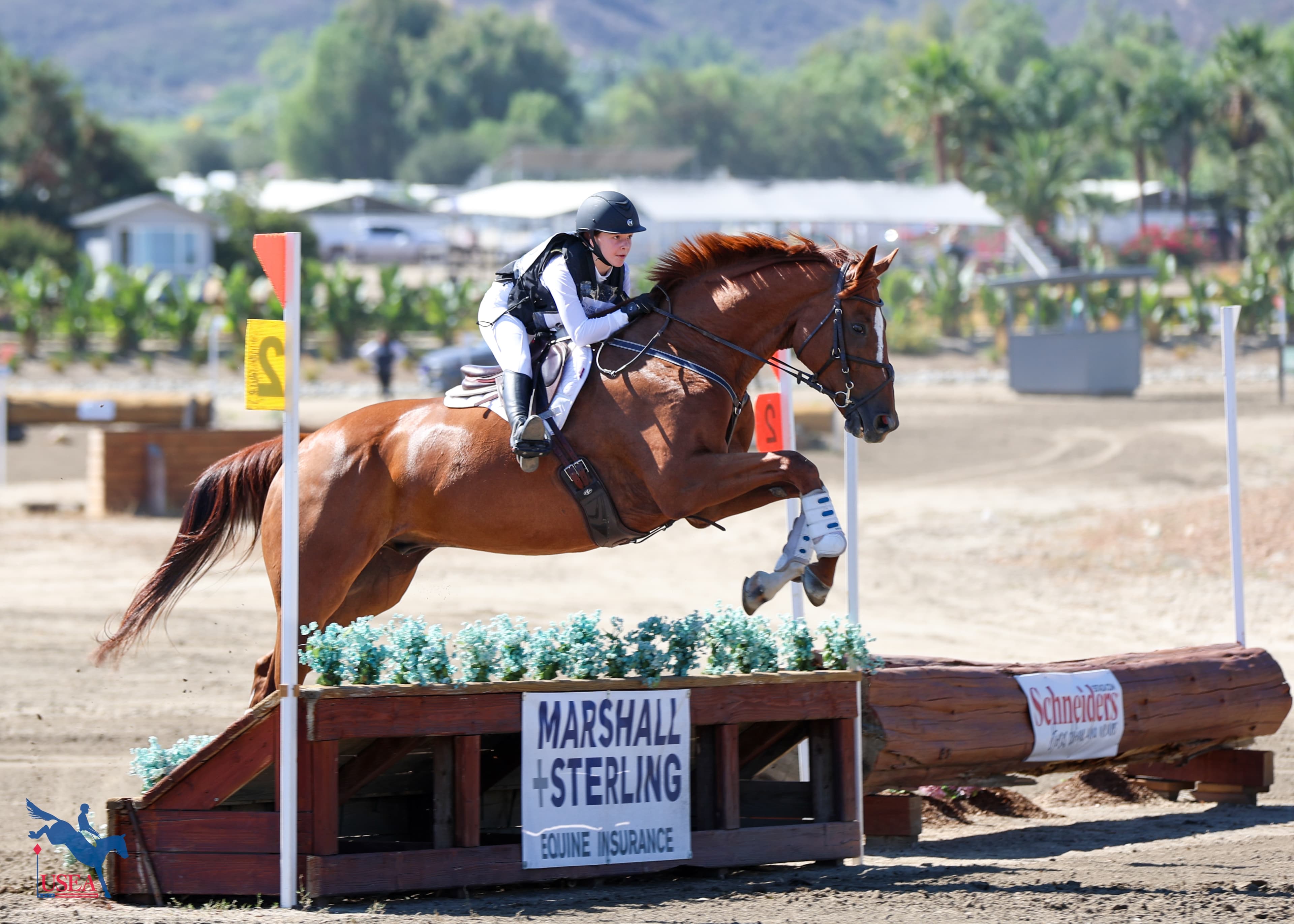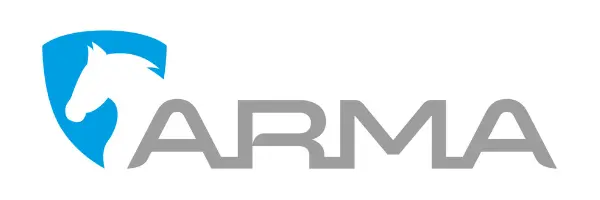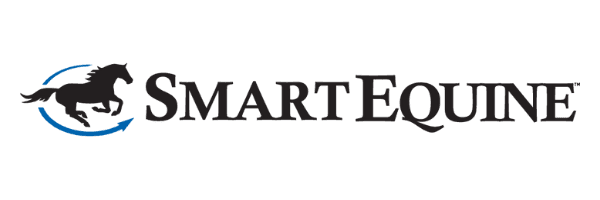The Coach’s Perspective: Inside The Champion’s Code with Boyd Martin

Every rider knows the feeling.
You’ve trained for months, rehearsed every movement, memorized every turn. But as you walk into the arena, your heart rate spikes, your breath shortens, and your thoughts start to race. Suddenly, everything you’ve practiced feels just slightly out of reach.
It’s tempting to label this as “nerves” or “mental weakness.” But the truth is, what you’re experiencing isn’t in your mind, it’s in your body. More specifically, it’s in your nervous system.
The nervous system is the rider’s secret weapon, and at times, their greatest saboteur. It’s the invisible system that determines whether your skills are available when it counts or whether stress hijacks them mid-course. Understanding how it works, and how to train it, may be one of the most powerful competitive advantages a rider can develop.
In this piece, we’ll explore not just the nervous system in concept, but in application, through the lived experience of Olympic and World Champion Boyd Martin, whose journey offers a rare look at how nervous system mastery can shape the making of a champion.
The Hidden Foundation of Performance
Every time you enter the ring, your body is running a silent calculation: Am I safe, or am I under threat?
That single question, asked by your autonomic nervous system, determines the quality of your performance long before your first jump.
When your body feels safe, your system moves into a “connection” state. Breathing deepens, awareness widens, and you ride with a sense of clarity, focus and control. This is the physiological foundation of what we call flow.
When your body senses threat, whether physical, emotional, or social, it moves into a protection state, preparing you to fight, flight, or freeze. These shifts happen in milliseconds, yet they have enormous impact on coordination, decision-making, and timing.
A 2023 study on competitive athletes found that many experienced somatic and cognitive anxiety symptoms, such as elevated heart rate and muscle tension, under pressure, and that those symptoms correlated with challenges in emotion regulation (ResearchGate). The effect tends to be more pronounced in sports that combine high risk, judgment, and public evaluation, like eventing.
Your nervous system doesn’t distinguish between missing a distance and missing a predator in the wild. The same circuitry fires. Learning to work with that system instead of against it changes everything.
How Dysregulation Shows Up in the Saddle
Most riders can recognize the signs once they know what to look for.
In the fight state, riders grip harder, over-aid, and attempt to control every stride. In flight, they rush, hold their breath, and try to “get it over with.” In freeze, they disconnect, lose body awareness, or go blank.
These aren’t flaws in character or evidence of lack of discipline. They’re your biology trying to keep you safe. Horses, attuned as prey animals, mirror these same patterns instantly. A dysregulated rider produces a dysregulated horse.
The good news is that regulation is trainable. Just like developing balance or rhythm, nervous system training can become part of your daily routine, quiet, consistent, and transformative.
Case Study: Boyd Martin, The Making of a Champion
Few athletes embody the spirit of mastery more than Boyd Martin.
A four-time Olympian and one of the most decorated riders in American eventing, Boyd's record speaks for itself: winning the 2021 Maryland 5 Star with On Cue and the 2003 Adelaide CCI5*-L with True Blue Toozac, along with numerous top CCI5*-L finishes around the globe.
But what defines Boyd isn't the medals. It's the evolution behind them.
In 2018, a runout at the water complex ended his hopes of a top finish at the 2018 World Equestrian Games. Moments like this could have haunted him. Instead, they became teachers.
When Boyd and I began working together, our goal wasn't to fix his mindset. It was to understand his physiology. We wanted to know what happened inside his body when he performed at his best, and what shifted when things fell apart.
Through review, reflection, and biometric feedback, a pattern emerged. When Boyd was anchored in the present, his breath was steady, his reactions fluid, and his horses mirrored his level of focus. Under stress, his body tightened, his chest constricted, and his focus narrowed. He moved from connection into protection.
That awareness changed everything.
He began to train his nervous system as intentionally as he trained his horses, incorporating recovery rituals, breathwork, and micro-reset practices before and after rides. His horses responded immediately. Their transitions smoothed. His connection deepened.
In Boyd's words: "I used to think I was elite, that I'd reached the top of the sport. What I didn't realize is that there was another level entirely. I didn't know what I didn't know."
That humility became the hallmark of his leadership. He started to see that success and failure are just sensations, both requiring capacity, not control. In his own words, "Success confirms your self-belief. It's a reminder that you belong. But it's just a moment. The work is staying present with it, letting it teach you without letting it define you."
Through this work, Boyd also refined his leadership beyond the saddle. Inside his barn, he began leading from integrity rather than appeasement. Instead of avoiding difficult conversations with owners or team members out of fear, he set new boundaries grounded in honesty and respect, choosing integrity over avoidance.
"I realized that when you're doing your absolute best, you can let go of trying to convince anyone else. Leadership is about integrity, not pleasing people."
And with his horses, Boyd's awareness deepened even further. He began to see them not as tools for performance, but as mirrors: partners reflecting his internal state back to him.
"If I'm tense, they're tense. If I'm focused and calm, they feed off that. The horse becomes an extension of your energy. Your regulation is their safety."
This philosophy, combined with a lifetime of grit, became the foundation of The Champion's Code, a masterclass Boyd and I created together to share the art and science of body-led performance.
It's not just about training harder. It's about leading with presence. It's about building the capacity to win, and to lose, without losing yourself.
Boyd often says that the champions he admires most aren't the ones with the flashiest rounds or the biggest sponsors. They're the ones who don't give up, who refine the details, who evolve.
"Everyone at this level works hard and has talent. What separates the greats are the ones who keep refining, who find the 1% no one else sees."
That's the essence of Boyd Martin's transformation. A rider who once believed excellence was about control discovered that true mastery is about connection: to self, to horse, to purpose.
And that, more than any medal, is what makes a champion
Training the System Beneath the Skill
Riders don’t need complex equipment to begin regulating their own systems. What they need is attention and practice.
Most riders focus entirely on what happens in the ring, the course, the rhythm, the technical execution. But elite performance begins before you mount and continues after you dismount. By building intentional rituals around these transitions, you create containers for presence and recovery.
Before: Take a moment to arrive and shift from wherever you've been into where you need to be. Not rushing from the trailer to the saddle, but pausing to ground yourself first.
After: Take a moment to complete and consciously close one chapter before opening the next. Not collapsing or immediately critiquing, but allowing your system to metabolize the experience.
These bookends aren't about adding more to your routine. They're about bringing awareness to the moments you're already moving through, transforming them from autopilot into anchors that support both your inner steadiness and outer performance
The more often you practice these resets, the more efficient your nervous system becomes at returning to balance. Regulation, like riding, is built through repetition.
In my work with riders of every level, from Olympic competitors to passionate amateurs and developing juniors, we go deeper into this process. We look at how each individual’s nervous system responds under pressure and build personalized tools for regulation, confidence, and recovery. This is the heart of my coaching: helping riders understand their internal landscape so they can lead themselves and their horses no matter what the arena brings.
When you begin training the system beneath the skill, you don’t just ride better. You ride differently. You ride with presence, empathy, and the quiet confidence of someone whose body knows how to come home.
Science Meets Practice
Modern sports science supports what top riders have long sensed: higher vagal tone, often measured via heart rate variability (HRV), is linked to better regulation, resilience, and performance under stress. For example, a 2021 PLOS ONE study showed that resting vagal tone predicts greater consistency in reaction times during attention tasks. And more broadly, research in Frontiers explains how stronger vagal activity supports sharper cognitive control and recovery in competitive settings.
In equestrian terms, this means clearer communication, steadier aids, and a stronger sense of partnership when the pressure rises.
The nervous system is not a concept reserved for researchers. It’s the invisible thread connecting emotion, movement, and connection. When trained intentionally, it becomes the stabilizing force behind every great performance.
From Knowledge to Integration
Understanding the nervous system is not about eliminating stress. It’s about creating capacity for it. When riders learn to recognize and guide their physiological state, pressure becomes a catalyst instead of a cage.
This is what separates champions from competitors. Boyd’s story illustrates that mastery isn’t about avoiding mistakes but returning from them faster. That ability comes from a body that knows how to recover, not just a mind that wants to win.
The Takeaway
Your nervous system is not your obstacle. It is your access point. When you train it with the same precision you bring to your horse, you unlock the consistency, confidence, and connection that define exceptional riding.
If you want to see what this work looks like in action, you can now get access to The Champion’s Code, the new masterclass Boyd Martin and I created to share the inner mechanics of championship performance. Inside, we explore the science, the stories, and the tools that help riders perform with clarity under pressure. Boyd and I will be hosting a live online event to share more on Thursday, November 20 at 5pm PT / 8pm ET. Register and learn more here.
For those joining the USEA Annual Meeting, I’ll be speaking on this very topic, how nervous system regulation is shaping the next generation of equestrian excellence.
The nervous system is not just part of the ride. It is the ride. When you learn to work with it, you discover the clarity and the confidence that every rider is searching for.
About the USEA Annual Meeting & Convention
The USEA Annual Meeting & Convention takes place each December and brings together a large group of dedicated USEA members and supporters to discuss, learn, and enjoy being surrounded by other eventing enthusiasts. The USEA organizes multiple seminars in addition to committee meetings, open forums, and tons of fun! The 2025 USEA Annual Meeting & Convention will take place in New Orleans, Louisiana, on Dec. 11—14. Click here to learn more about the USEA Annual Meeting & Convention.
The USEA would like to thank the USEA Annual Meeting & Convention Sponsors: Adequan, ARMA, Bates Saddles, D.G. Stackhouse & Ellis, Grayson-Jockey Club Research Foundation, Horse & Country, Kerrits, Marshall+Sterling, Nunn Finer, Nutrena, PulseVet, Rebecca Farm, RevitaVet, Ride iQ, Schneiders Saddlery, SmartEquine, Standlee, and World Equestrian Brands.














